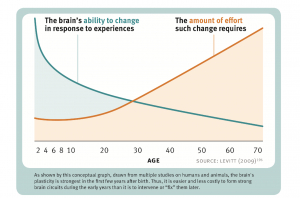Neuroplasticity
From BurnZero
Neuroplasticity is the ability of the brain to change its default activity in response to intrinsic or extrinsic stimuli by reorganizing its structure, functions, or connections. Humans lose their neuroplasticity as they age.[1]
The brain is neurochemical in nature i.e. part chemistry and part electric circuitry. When these combine think of it like hiking trails. The ones that get a lot of traffic get smoother and wider, with brush stomped down and pushed back. The neural pathways that sit unused grow over, becoming less likely to be used. The pathways most used make wide tracks which are more used as they are easily transversable.
There are ways to increase neuroplasticity temporarily via shock which can help people learn new ways.
References
- ↑ Changes in plasticity across the lifespan: Cause of disease and target for intervention. Accessed on 3rd March 2022, via https://www.ncbi.nlm.nih.gov/pmc/articles/PMC4392917/
